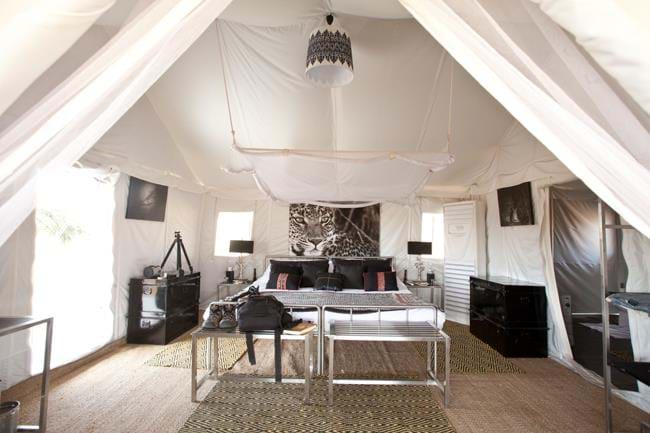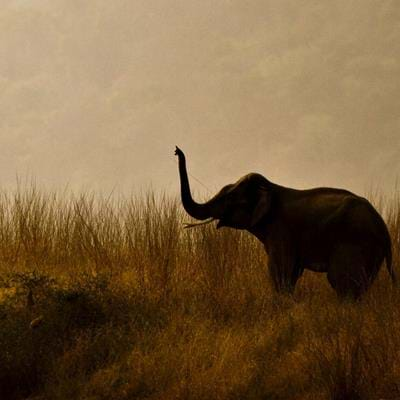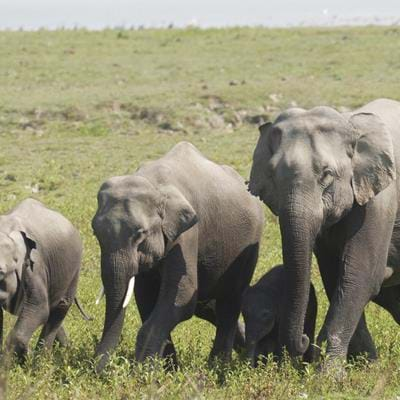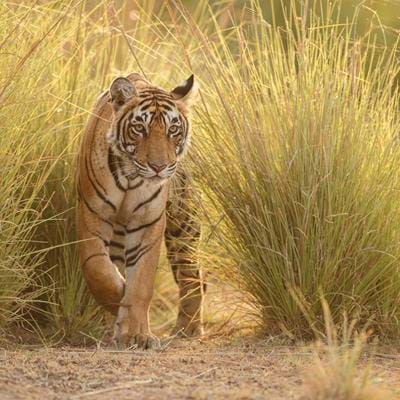India 09.10.2014 David Abram
Author David Abram relishes one of India’s newest wildlife experiences.
“This place is unique in Asia, if not the world,” enthuses our guide, Adam, as our 4WD bounds down a track of soft sand and acacia scrub. Ahead of us, an outcrop of eroded granite boulders glows red in the late evening sunlight.
“These hills all shelter leopards lairs. Some of them, as many as four or five. The Rabari people who graze their flocks here see big cats almost every day, and there’s a pretty good chance that within an hour or two, you’ll have sighted one as well.”
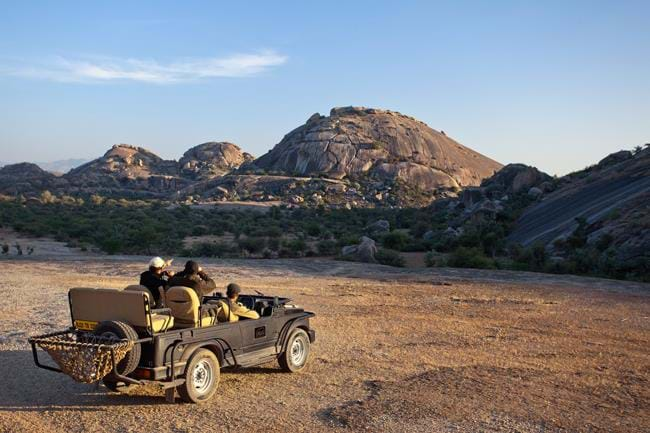
He wasn’t wrong, though in truth, without Adam’s carefully trained eye and some expensive Nikon glass, we’d have missed the sleek, mottled leopard languishing on a rock ledge barely fifty metres from us.
“She’s just waking up, waiting for the flocks to return to the village in the hope of picking off a straggler,” explained Adam.
“But why don’t the shepherds retaliate by hunting the leopards?” asked one of my fellow guests.
“Ah, that’s precisely what makes Jawai so special.” Adam went on to explain how, for two centuries or more, the cats had been protected by a law imposed by the Maharajas of Jodhpur, whose hunting reserve this was, forbidding the slaughter of any leopards – except by them. To reinforce the ruling, compensation was traditionally paid to any herder who lost a sheep or goat to a predator.
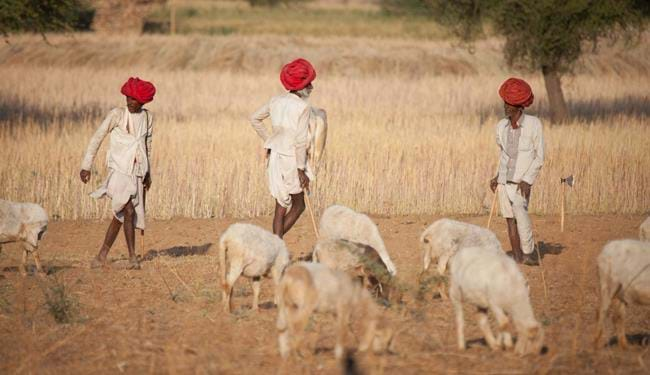
The scheme continues to this day, only instead of the Maharaja, it is now maintained by the Indian Government, who employ a warden to verify any kills and dole out money.
“The result is that local people completely leave the leopards alone, which is why there are so many of them here. We’ve identified more than thirty in the immediate vicinity of the camp where you’re sleeping!”
Our female was now on her feet, alerted by the tinkle of bells to the presence of a Rabari flock passing somewhere through the thorn scrub to our right. After a photogenic stretch and yawn, she crept off in search of supper.
Over the succeeding days, we saw cats every morning and evening. The best sighting was of a large male only thirty metres away. And on one occasion we saw a mother and cub together. We also narrowly missed a kill, and spied two leopards with arc lights at night, moving through the dark rocks together.
By any standards, such a fabulous hit rate is world class. But Jawai has one other great, and unique, attribute. The camp is set amid some of the most spellbinding landscape in all of India.
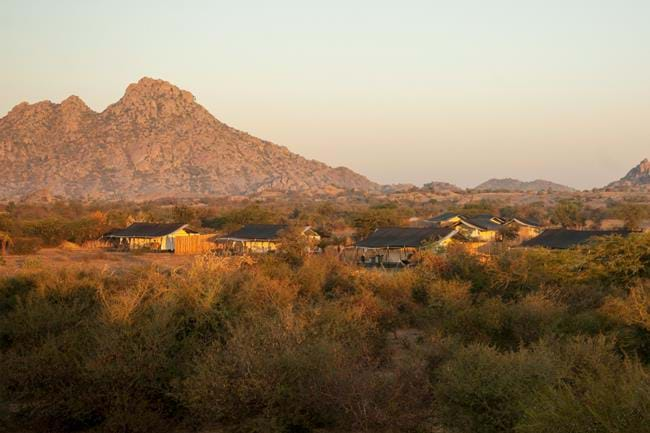
Enfolded by otherworldly rock outcrops, the area centres on a reservoir created in the 19th century by the local Maharajas to irrigate the villagers’ fields. So despite lying amid an arid corner of the state, there’s ample greenery around, even in the dry season. Moreover, the lake attracts large numbers of birds, notably flocks of pink flamingos.
One of most thrilling sights I’ve ever witnessed in India was the view from the top of one outcrop, which I scrambled up for a view over the lake. Reflected in the glassy waters below were the outlines of the surrounding hills, framed by splashes of scarlet flame trees. Flamingos tip-toed gingerly across a sand bar, as a lone crocodile drifted through the shallows.
Nearby, people were hard at work harvesting chick peas and collecting firewood. The Rabaris who inhabit this beautiful corner of Rajasthan maintain a very traditional way of life, wearing their trademark white cotton tunics and voluminous red turbans, or in the case of women, armfuls of bone bangles and silver bracelets, with elaborately embroidered veils – a striking sight when set against the earthy backdrops.

The Jawai Leopard Camp where I was staying arrange for guests to accompany Rabari herders as they round up their flocks in the evening – a fascinating way to get closer to the landscape and local people.
The game drives, however, provide the day’s main focus. Between the morning and evening trips, the day is spent around the table in the shaded dining area, or around a lovely overflow pool, swapping stories and admiring the views.
Accommodation is in eight luxury canvas tents – think “Out of Africa” meets 1930s Hollywood on location – which come with their own fully plumbed-in bathrooms and showers. The beds are gigantic, with more silk cushions than seems feasible; and there are some delightful designer touches, such as silver tea sets and steamer trunks. But best of all was the verandah outside, where I whiled away many happy hours gazing across the bush to the distant boulder hills – a scene made all the more exotic for the knowledge that out in those rocks lurked some of the world’s most beautiful and elusive wild cats.
